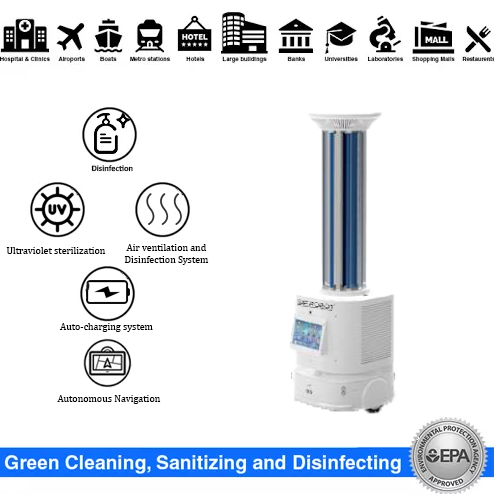Telepresence Robot SIFROBOT-4.3 Overview
April 29, 2020
Major Roles Played by Robots During The Pandemic
May 4, 2020UVC Disinfection Robots vs. COVID-19
Nowadays, the entire world is battling the new COVID-19. As a result, hospitals, schools, and industry sectors are using disinfection robots in order to mitigate the risk to their workers.
UVC disinfection and sterilization robots destroy germs in the atmosphere by decomposing their DNA structures to avoid and reduce the spread of viruses, bacteria and other dangerous microorganisms.
UVC radiation is a proven disinfectant for air, water and surfaces that can help reduce the risk of contamination and has been commonly used for more than 40 years. All bacteria and viruses tested to date (many hundred over the years, including numerous coronaviruses) react to UV-C disinfection.
The use of automated UVC disinfection robots not only reduces human exposure to the virus but is also proving to be more rigorous and effective in decontaminating spaces.
For this reason the UVC disinfection robots SIFROBOT-6.5 and SIFROBOT-6.53 by SIFSOF are great examples of these devices that use the UVGI for a totally effective disinfection of any indoor and outdoor areas.
They are able to disinfect patients and operating rooms in hospitals and in public settings thanks to powerful shortwave-length UVC lights that emit enough energy to remove DNA or RNA from any microorganisms exposed to them.
In the terms of disinfection and sterilization, the robot is equipped with 8 ultraviolet lamps to achieve 360°all-round coverage , with accumulated light intensity of 936UV/cm2 and coverage radius of no less than 6m. So that it provides rapid, effective inactivation of microorganisms through a physical process.
UVC Robots may be categorized as follows: disinfection unit, complementary devices, combined disinfection agents, and mobility devices. Most importantly, they are manufactured to ensure maximum efficiency and ease of use.
References: UVC Disinfection Robot,
[launchpad_feedback]



